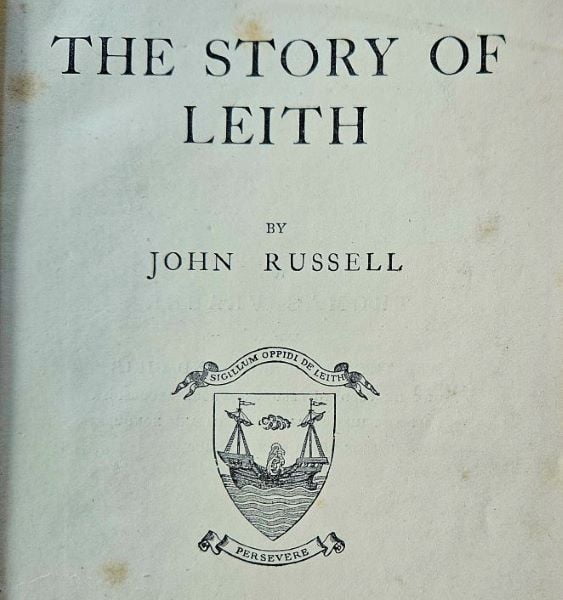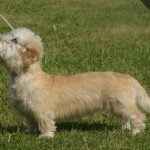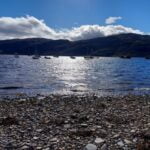Leith was a port, not only for itself, but also the at that time neighbouring town of Edinburgh. Berwick had also now become an English town. Plus, Leith was vital for the wool trade of the great abbeys of the Scottish borders.
The number of sea captains in Leith was out of all proportion to its size. In no other port in the whole of Europe could more daring captains be found.
None had made a greater name for himself than Sir Andrew Wood of Largo. A Leith man born and bred.
In the time of King James III of Scotland, he was commander of two ships, each weighing 300 tonnes. The Flower and the Yellow Carvel.
With these ships Sir Andrew would make frequent voyages to France and the Low Countries of the Netherlands, Luxembourg and Belgium. They were known as the Low Countries due to the level at which much of their land lies relative to sea level.
Wood had developed a great genius for naval warfare thanks to his frequent encounters with Dutch, English and Portuguese pirates in defence of his ships and their cargoes. He was known as the Scottish Nelson. That of course being reference to the great naval combatant Admiral Horatio Nelson who won the Battle of Trafalgar for Britain against a naval force of the French Emperor Napoleon Bonaparte in 1805.
He was a trusted servant of King James III of Scotland, by whom he had been employed on several missions, including the successful defence of Dumbarton Castle against the fleet of King Edward IV of England in 1481. Also, his attack on the fleet of Sir Edward Howard, sent by the English king to do as much damage as he could along the shoreline of the Firth of Forth.
As a reward for these important services against the English, King James III of Scotland gave him part of the lands of Largo in Fife.
However, after the death of King James III’s queen 1486, James lived in increasing isolation in Stirling Castle amidst growing rumours of his greed fr wealth and his undesirable friendship with England.
Finally, the Scottish nobles seized his eldest son and defeated James at the Battle of Sauchieburn near Bannockburn, just to the south of , on 11 June 1488.
Ever loyal, Sir Andrew Wood had two ships anchored on the shores of the River Forth near Alloa, during this battle. In aid of his royal master, he kept several smaller vessels close by the shore to receive the king, if he should be defeated.
However, the king was thrown from his horse as he fled from the field.
Carried into a nearby cottage, he called for a priest, whereupon a mysterious figure forced his way in, and stabbed the king to death!
James was buried at Cambuskenneth Abbey near Stirling.
This tragedy rendered the efforts of Sir Andrew in vain.
After the Battle of Sauchieburn, the insurgent Lords proclaimed James IV King of Scotland at Stirling, and marched to Edinburgh Castle to capture it.
Sir Andrew would soon give his loyalty to the new king of Scotland, James IV.
James IV deeply desired to make Scotland a power on the sea. To this end, he found his new friend and loyal supporter Sir Andrew Wood most useful. Leith of course and Newhaven, would play a crucial role in this endeavour.
Find out how in the next instalment, which will be published in early autumn.
Fraser Paterson
Freelance Tour Guide and Writer







Thank you I have just been searching for information approximately this topic for a while and yours is the best I have found out so far However what in regards to the bottom line Are you certain concerning the supply
I have read some excellent stuff here Definitely value bookmarking for revisiting I wonder how much effort you put to make the sort of excellent informative website
Wonderful beat I wish to apprentice while you amend your web site how could i subscribe for a blog web site The account aided me a acceptable deal I had been a little bit acquainted of this your broadcast provided bright clear idea
Wonderful web site Lots of useful info here Im sending it to a few friends ans additionally sharing in delicious And obviously thanks to your effort
Your writing is a true testament to your expertise and dedication to your craft. I’m continually impressed by the depth of your knowledge and the clarity of your explanations. Keep up the phenomenal work!
Thanks I have recently been looking for info about this subject for a while and yours is the greatest I have discovered so far However what in regards to the bottom line Are you certain in regards to the supply
I loved as much as youll receive carried out right here The sketch is attractive your authored material stylish nonetheless you command get bought an nervousness over that you wish be delivering the following unwell unquestionably come more formerly again as exactly the same nearly a lot often inside case you shield this hike
you are in reality a just right webmaster The site loading velocity is incredible It seems that you are doing any unique trick In addition The contents are masterwork you have performed a wonderful task on this topic
What i dont understood is in reality how youre now not really a lot more smartlyfavored than you might be now Youre very intelligent You understand therefore significantly in terms of this topic produced me personally believe it from a lot of numerous angles Its like women and men are not interested except it is one thing to accomplish with Woman gaga Your own stuffs outstanding Always care for it up
Hi my family member I want to say that this post is awesome nice written and come with approximately all significant infos I would like to peer extra posts like this
I wanted to take a moment to commend you on the outstanding quality of your blog. Your dedication to excellence is evident in every aspect of your writing. Truly impressive!
Somebody essentially lend a hand to make significantly articles Id state That is the very first time I frequented your website page and up to now I surprised with the research you made to make this actual submit amazing Wonderful task
Somebody essentially lend a hand to make significantly posts I might state That is the very first time I frequented your web page and up to now I surprised with the research you made to create this particular put up amazing Excellent job
I’ve been following your blog for some time now, and I’m consistently blown away by the quality of your content. Your ability to tackle complex topics with ease is truly admirable.
Every time I visit your website, I’m greeted with thought-provoking content and impeccable writing. You truly have a gift for articulating complex ideas in a clear and engaging manner.
My brother recommended I might like this web site He was totally right This post actually made my day You cannt imagine just how much time I had spent for this information Thanks
Your writing has a way of resonating with me on a deep level. It’s clear that you put a lot of thought and effort into each piece, and it certainly doesn’t go unnoticed.
I just wanted to drop by and say how much I appreciate your blog. Your writing style is both engaging and informative, making it a pleasure to read. Looking forward to your future posts!
What i do not realize is in fact how you are no longer actually much more wellfavored than you might be right now Youre very intelligent You recognize thus considerably in relation to this topic made me in my view believe it from numerous numerous angles Its like men and women are not fascinated until it is one thing to do with Lady gaga Your own stuffs excellent All the time handle it up
helloI like your writing very so much proportion we keep up a correspondence extra approximately your post on AOL I need an expert in this space to unravel my problem May be that is you Taking a look forward to see you
Thank you for the auspicious writeup It in fact was a amusement account it Look advanced to more added agreeable from you By the way how could we communicate
Your blog is a constant source of inspiration for me. Your passion for your subject matter shines through in every post, and it’s clear that you genuinely care about making a positive impact on your readers.
I was suggested this web site by my cousin Im not sure whether this post is written by him as no one else know such detailed about my trouble You are incredible Thanks
Your blog is a true hidden gem on the internet. Your thoughtful analysis and engaging writing style set you apart from the crowd. Keep up the excellent work!
Somebody essentially lend a hand to make significantly posts I might state That is the very first time I frequented your web page and up to now I surprised with the research you made to create this particular put up amazing Excellent job
Somebody essentially help to make significantly articles Id state This is the first time I frequented your web page and up to now I surprised with the research you made to make this actual post incredible Fantastic job
I just could not depart your web site prior to suggesting that I really loved the usual info an individual supply in your visitors Is gonna be back regularly to check up on new posts
Your blog is a breath of fresh air in the often mundane world of online content. Your unique perspective and engaging writing style never fail to leave a lasting impression. Thank you for sharing your insights with us.
Its like you read my mind You appear to know so much about this like you wrote the book in it or something I think that you can do with a few pics to drive the message home a little bit but other than that this is fantastic blog A great read Ill certainly be back
Simply wish to say your article is as amazing The clearness in your post is just nice and i could assume youre an expert on this subject Well with your permission let me to grab your feed to keep updated with forthcoming post Thanks a million and please carry on the gratifying work
Hello i think that i saw you visited my weblog so i came to Return the favore Im trying to find things to improve my web siteI suppose its ok to use some of your ideas
Magnificent beat I would like to apprentice while you amend your site how can i subscribe for a blog web site The account helped me a acceptable deal I had been a little bit acquainted of this your broadcast offered bright clear idea
Your blog is a constant source of inspiration for me. Your passion for your subject matter is palpable, and it’s clear that you pour your heart and soul into every post. Keep up the incredible work!
Nice blog here Also your site loads up very fast What host are you using Can I get your affiliate link to your host I wish my site loaded up as quickly as yours lol
you are in reality a good webmaster The website loading velocity is amazing It sort of feels that youre doing any distinctive trick Also The contents are masterwork you have done a fantastic job in this topic
Your blog is a breath of fresh air in the often stagnant world of online content. Your thoughtful analysis and insightful commentary never fail to leave a lasting impression. Thank you for sharing your wisdom with us.
I just could not depart your web site prior to suggesting that I really loved the usual info an individual supply in your visitors Is gonna be back regularly to check up on new posts
Somebody essentially lend a hand to make significantly articles Id state That is the very first time I frequented your website page and up to now I surprised with the research you made to make this actual submit amazing Wonderful task